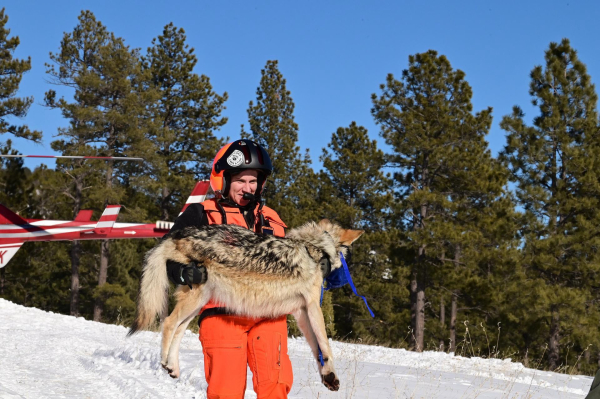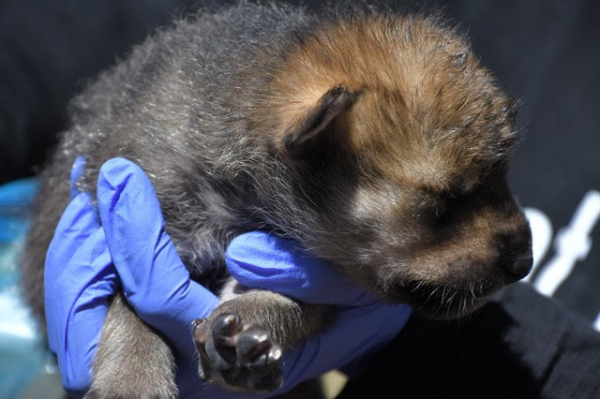Plan Announced for 2014 Mexican Wolf Releases in Arizona

PHOENIX — The U.S. Fish and Wildlife Service (Service) and the Arizona Game and Fish Department (AGFD) have initiated actions for the release of two Mexican wolves in Arizona to replace wolves illegally shot, as directed by the Arizona Game and Fish Commission in 2012 and to increase the genetic diversity of the wild population.
The Mexican Wolf Interagency Field Team (IFT) tasked with the day-to-day management of the wild population captured two wild males during the January winter population count. M1249 was taken to the Service’s Sevilleta Wolf Management Facility in New Mexico and is paired with a captive female wolf. M1290 was paired with a captive female wolf and is being held in a release pen in the Apache National Forest.
Neither of the male wolves has documented involvement in livestock depredations or nuisance behavior, making the animals good candidates for pairing with a captive female and subsequent release. Both wolf pairs are being observed for breeding behavior and will be released into the primary recovery zone in Arizona in the spring prior to giving birth.
“This is one of the important steps in Game and Fish’s commitment to replace the four wolves lost to illegal causes between 2011 and 2013. One of the key considerations when the options were evaluated was to improve population genetics, which is important to the long-term survival of the subspecies,” said Jim deVos, the Arizona Game and Fish Department’s Assistant Director for Wildlife Management.
An additional option to replace wolves illegally shot and to increase the genetic diversity of the wild population — cross fostering wolf pups born in captivity into a wild wolf pack litter — still remains under consideration and will be evaluated in the future.
“The pairing of genetically valuable females with males with wild experience accomplishes two goals, adding genetically valuable genes into the population and replacing wolves that were taken illegally,” said Benjamin Tuggle, the U.S. Fish and Wildlife Service’s Southwest Regional Director. “If these pairs successfully establish themselves in the wild, they will increase population numbers immediately and will contribute to a more genetically robust population in the future.”
In 2013, the IFT attempted the release or translocation of two pairs of wolves and a single wolf into the Blue Range Wolf Recovery Area. A single male was released into Arizona and recaptured in New Mexico shortly after release for displaying nuisance behavior. Plans to release a pair of wolves in Arizona were halted when another pack displayed territorial aggression and threatened the safety of the new pair. That pair was returned to captivity. In addition, a pair of wolves was translocated into the Gila Wilderness of New Mexico. However, the male dispersed outside of the recovery area boundary and was recaptured, and the female was later legally shot and killed on private land in the act of killing livestock.
Release sites will be chosen based on several factors, including appropriate prey density, distance from occupied residences, seasonal absence of livestock grazing, and occurrence of established wolf packs in the area.
The Mexican wolf population is estimated to be at least 83 animals, the highest number of wolves since the reintroduction began in 1998.
The Reintroduction Project partners are AGFD, White Mountain Apache Tribe, USDA Forest Service and USDA Animal and Plant Health Inspection Service (Wildlife Services), several participating counties in Arizona, the Eastern Arizona Counties Organization, and the Service.






